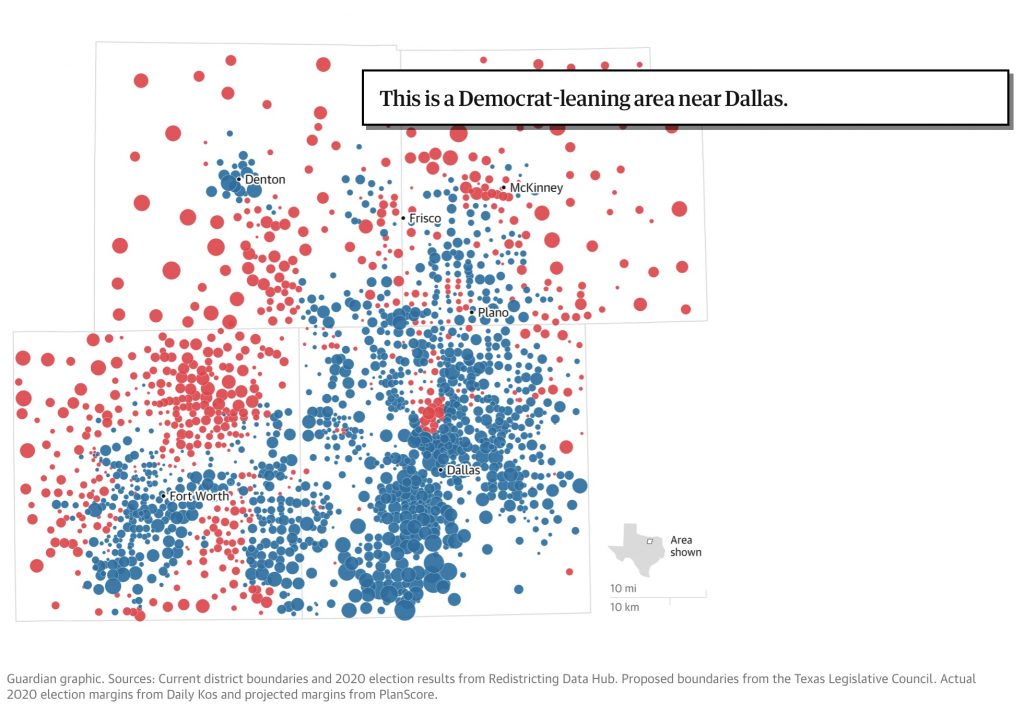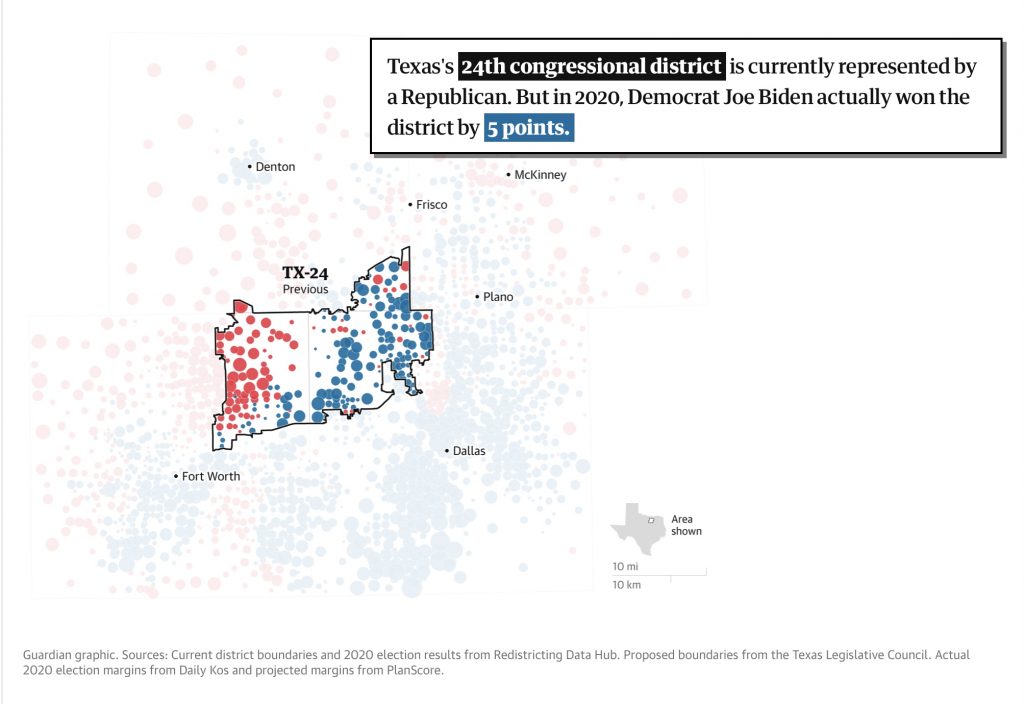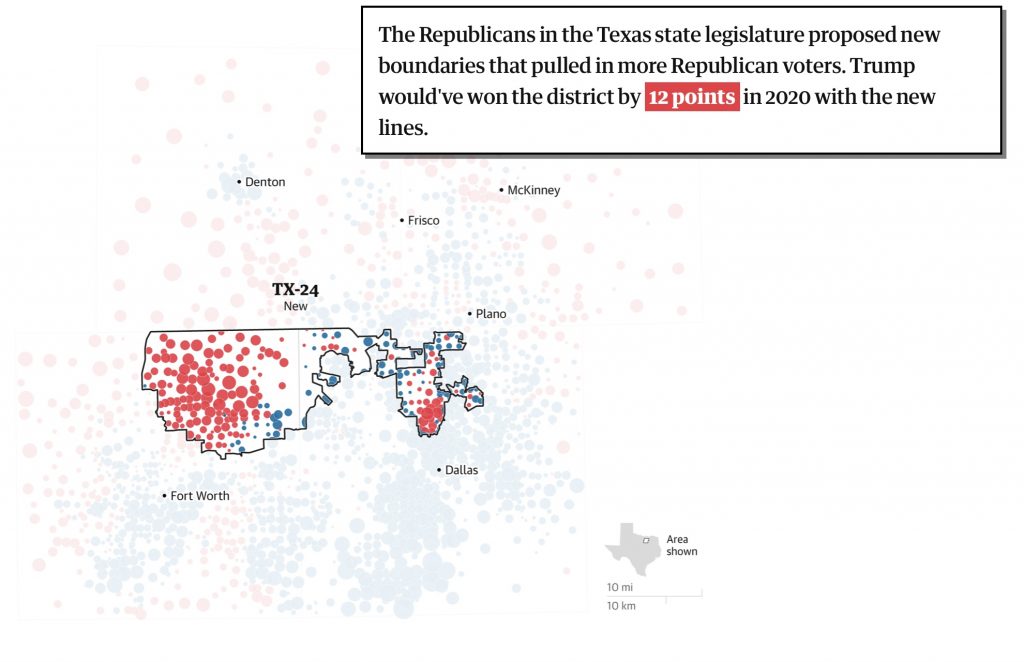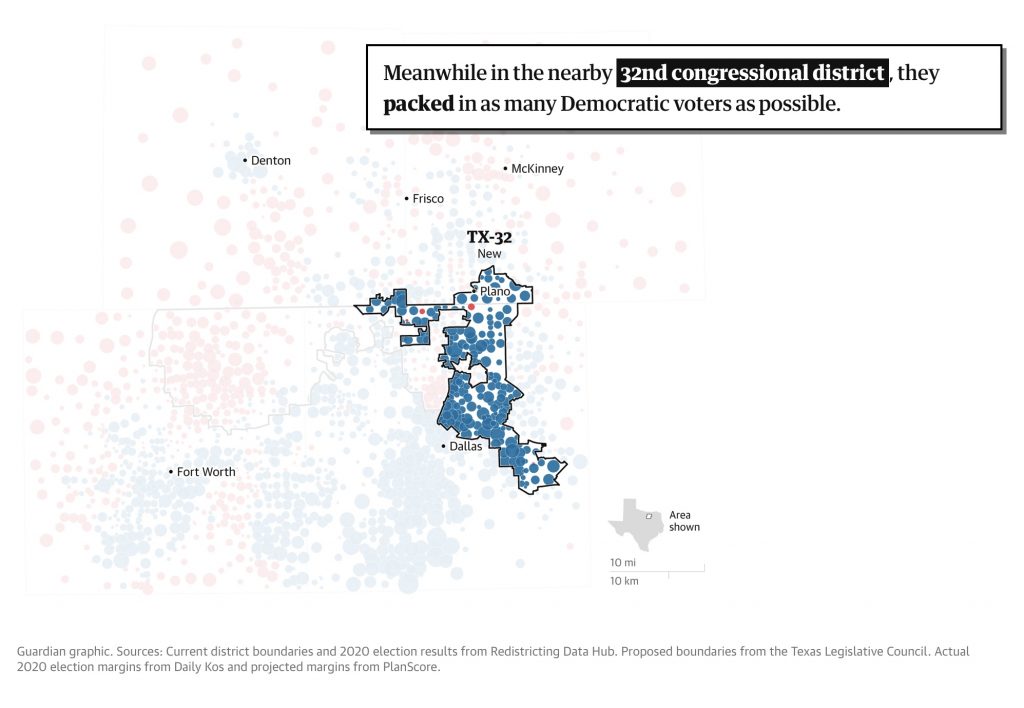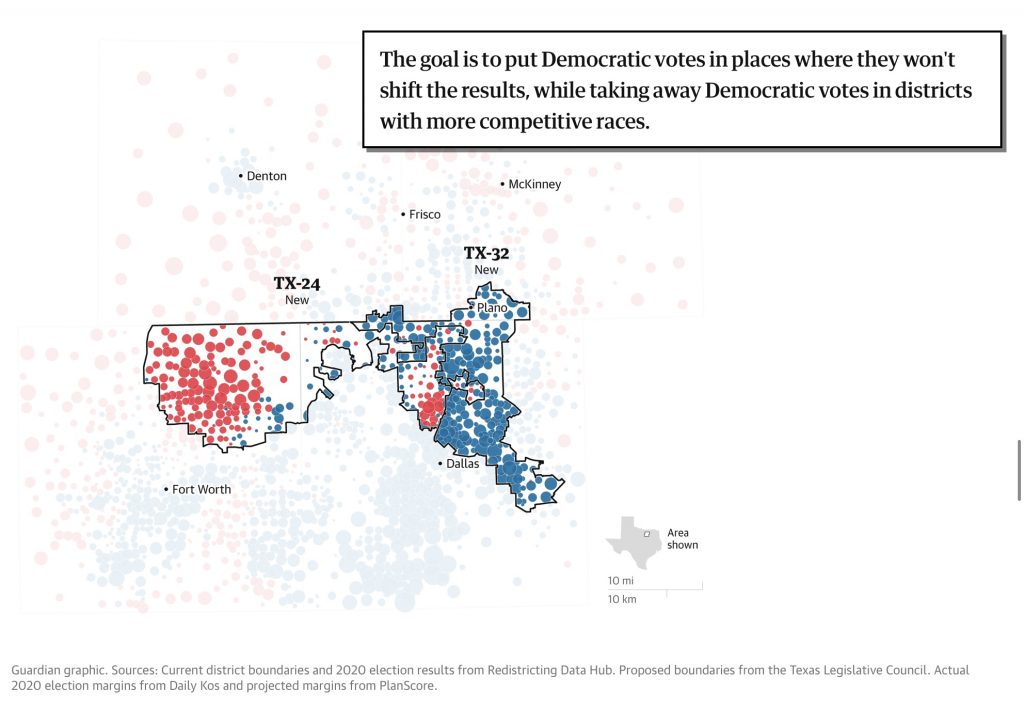The US is poised to have a staggeringly low number of competitive House seats, an alarming trend that makes it harder to govern and exacerbates political polarization
When millions of American voters head to the polls this autumn to vote for congressional candidates, the vast majority of their votes won’t matter at all.
It’s an idea that’s anathema to the very idea of US government – that politicians are accountable to the people. But America is poised to have a staggeringly low number of competitive seats in the US House, an alarming trend that makes it harder to govern and exacerbates political polarization.
States have now redrawn 327 of the US House’s 435 districts so far as part of the once-a-decade redistricting process and the number of competitive districts is dropping, according to FiveThirtyEight. Just 26 of those districts are considered to be highly competitive, meaning either party has less than a five-point advantage in them.
When redistricting is complete, there could be between 30 and 35 competitive seats, predicted Dave Wasserman, a redistricting expert for the non-partisan Cook Political Report. That could leave as much as 94% of the US House running in relatively safe seats.
As the number of competitive seats falls, the number of super-safe seats is also rising. As of mid-January, the number of seats Donald Trump carried in 2020 by at least 15 points increased from 54 to 70, according to the Brennan Center for Justice. The number of districts Biden carried by at least 15 points had increased from 20 to 23.
Competition in the US House has been falling for decades. Some of the decline can be attributed to the natural geographic sorting of likeminded voters choosing to live together. In 2012, after the last round of redistricting, there were 66 districts that were competitive, Wasserman said. By 2020, 51 districts were considered competitive.
But politicians are also using their power to draw district lines to exacerbate the lack of competition.
“Competitive seats are the grease that make the machinery of the House function. And we’ve seen an annihilation of competitive seats in the last several decades,” Wasserman said.
“Redistricting is accelerating that decline and removing many of the incentives for parties to recruit candidates with broad appeal. The House is becoming less biased in favor of Republicans, but it’s also becoming more ossified because there will be more safe seats than ever – and the battlefield will be narrower,” he added.
It’s a trend that will probably profoundly affect American politics. Instead of worrying about appealing to voters during a general election, candidates are pushed to the extremes of their parties, becoming more focused on fending off primary challengers. It also discourages compromise and bipartisanship, instead incentivizing politicians to brandish their ideological bonafides.
“I’m very concerned about what’s happened,” said Richard Pildes, a law professor at New York University who has written about the dangers of non-competitive congressional elections. “The more members are in safe seats, the more they’re capable of acting as these kind of independent free agent politicians … it could make the House even more ungovernable.” The 116th Congress, which was in session from 2019 to 2021, was one of the least productive in US history.
The lack of competition, Pildes noted, also makes the US House less responsive to changes in voters’ preferences. “You can have a three-point swing in voters’ preferences, and it’s not going to affect who’s going to be elected,” he said.
No state has seen a bigger drop in competition during the redistricting cycle than Texas. Recognizing Democratic gains in the state in recent years, Republicans used their redistricting power to reconfigure district lines to shore up vulnerable seats. They reduced the number of competitive districts in the state from 12 to just one. They increased the number of solidly safe Republican seats – ones Trump would have carried by at least 15 points – from 11 to 21. They also increased the number of solidly Democratic seats from eight to 12.
One of the best examples of this approach is the way that Republicans redrew the state’s 24th congressional district, which is in the Dallas-Fort Worth area. The district is represented by Beth Van Duyne, a Republican, who narrowly won the general election in 2020. Republicans reconfigured the district to make it one that Trump would have easily carried by 12 points in 2020.
The Democrats excised from the district were packed into a neighboring district represented by Colin Allred, a Democrat. The packing transformed the district from one that was competitive to one that was much more reliably blue. By just moving the lines, Republicans changed two districts where incumbents were vulnerable into two safe ones.
“The basics in Texas are, in most cases the primaries determine who the victor is gonna be in the general election in most cases,” said Joshua Blank, the research director at the Texas Politics Project. “Candidates in both parties are adjusting to the new normal of having to seek support from a more ideologically homogenous, but also more extreme primary electorate.”
A lack of competitive districts could also affect where parties choose to invest their campaign resources, said Amanda Litman, the co-founder and executive director of Run for Something, a group focused on local races. The Democratic party, she noted, tends to focus its effort in places where there is overlap between competitive congressional districts and presidential battlegrounds.
“The fewer competitive elections there are, the fewer places that will be able to have concentrated effort and intentionality around,” she said.
There is some preliminary evidence showing that states using commissions to draw maps are producing more competitive plans. “When commissions draw plans you do see more competitive districts emerge than when a single party has control over the process in the state legislature,” Pildes said.
He also noted that there can be a tradeoff between partisan fairness and competitive districts. In a state where voters are closely divided between the two parties, lawmakers could choose to maximize drawing competitive districts or districts that lock in a split result between the two parties. Politicians, he noted, tend to choose the latter.
“You can draw a map that is fair in terms of partisan outcomes in which everyone is in a safe seat,” he said. “The value of competitive districts gets sort of short shrift in the political process because there’s not a lot of political self-interest in creating competitive districts.”
This article is part of the Guardian’s series The Fight to Vote

